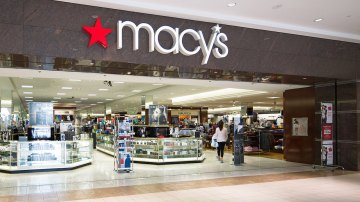 The retailer guide to negotiating rent relief
The retailer guide to negotiating rent relief A number of retailers are already in discussion with landlords about ways to alleviate that pressure, but those negotiations can be tough. Landlords aren’t always so understanding and they have their own financial situations to deal with as well. Glossy talked to a few experts in the real estate and...
 Inside DTC brands’ approach to first-time discounting
Inside DTC brands’ approach to first-time discounting The current strained retail environment has forced many DTC brands that normally avoid discounts at all costs to put products on sale. But to avoid diluting the brand or completely killing their margins, they're offering sales on the sly. That includes hosting exclusive sales events and offering discounts only through...
 How retailers fared on their 2-week plans for stores and employees
How retailers fared on their 2-week plans for stores and employees Two weeks ago, when coronavirus was in full swing but brands were still feeling hopeful, a number of players in the fashion industry made several large changes to their business with the optimistic timeline of two weeks -- two weeks of store closures, two weeks of full pay for retail...
 Luxury fashion retailer The Modist closes its doors
Luxury fashion retailer The Modist closes its doors The Modist, the barely-3-year-old luxury e-commerce platform that focused on modest fashion, is ceasing operations permanently, according to a note from founder Ghizlan Guenez posted on the company’s social media channels on Thursday.
 How brands are using new online events for data acquisition
How brands are using new online events for data acquisition Fashion brands have long known that events are a great way to build a community, but in the days of coronavirus, when gatherings are impossible, some brands are taking those in-person events online. From workout classes to coffee meet-ups, brands are finding that doing events online isn’t just stopgap replacement...
 How online marketplaces are providing support to small business partners
How online marketplaces are providing support to small business partners There’s been a wave of marketplaces and platforms doing what they can for their smaller partners, either via assistance in logistics and fulfillment or through marketing. For those marketplaces, including Farfetch and Bulletin, it’s not just the right thing to do morally, but it’s also vital to keeping their own business business...
 Fashion brands are shifting production to work-from-home clothes
Fashion brands are shifting production to work-from-home clothes Certain types of clothing just aren’t needed at the moment. But sweatshirts, leggings and loungewear are all booming as people stay home, and brands are shifting their production both to answer new demand and maintain cash flow.
 Bespoke brands are rushing to build and promote virtual fitting tools
Bespoke brands are rushing to build and promote virtual fitting tools With the vast majority of Americans quarantined and events canceled, one area of fashion that one would expect to be hit the hardest is bespoke suits. But according to several founders, suit fittings are still happening, they’ve just moved online.
 ‘The devil is in the details’: Small brands are cautiously optimistic about the stimulus bill
‘The devil is in the details’: Small brands are cautiously optimistic about the stimulus bill After weeks of uncertainty, an emergency coronavirus stimulus bill agreement was finally reached between the senate and the White House on Tuesday and is expected to come into effect as early as April. While the details are still hazy, some key provisions are already clear: loans for small businesses and...
